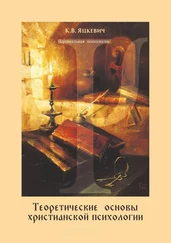Ronald J. Knapp, Beyond Endurance: When a Child Dies (New York: Schocken, 1987).
V. R. Pine, "Comparative Funeral Practices", Practical Anthropology 16 (1969): 49–62. См.: Ken White, "Living and Dying the Navajo Way", Generations 11 (Spring 1987): 44–47. Other cultural differences are discussed by Elisabeth Kubler–Ross, Death: The Final Stage of Growth (Englewood Cliffs, N.J.: Prentice–Hall, 1975).
Это тема книги лауреата Пулитцеровской премии: Ernest Becker, The Denial of Death (New York: Free Press/Macmillan, 1975).
David Barton, ed., Dying and Death: A Clinical Guide for Caregivers (Baltimore: Williams & Wilkins, 1977), 116, 117.
Ин. 11:33–36.
"Bereavement and Grief — Part I", Harvard Mental Health Letter.
M. Irwin et al., "Life Events, Depressive Symptoms, and Immune Functions", American Journal of Psychiatry 144 (1987): 437–441.
Jaako Kaprio, Markku Koshenvuo, and Heli Rita, "Mortality after Bereavement: A Prospective Study of 95,647 Widowed Persons", American Journal of Public Health 11 (March 1987): 283–287.
См. также, напр.: Archibald D. Hart, The Hidden Link between Adrenalin and Stress (Waco, Tex.: Word, 1986).
Больше данных представлено в книге: Wolfgang Stroebe and Margaret S. Stroebe, Bereavement and Health (New York: Cambridge University Press, 1987).
Lewis, A Grief Observed, 66, 67.
John F. Crosby and Nancy L. Jose, "Death: Family Adjustment to Loss", in Stress and the Family: Volume II — Coping with Catastrophe, ed. Charles R. Figley and Hamilton I. McCubbin (New York: Brunner/Mazel, 1983), 76–89.
V. D. Volkman, "The Recognition and Prevention of Pathological Grief, Virginia Medical Monthly 99 (1972): 535–540.
C. Everett Koop and Elizabeth Koop, Sometimes Mountains Move (Wheaton, III.: Tyndale, 1979), 40, 73.
Arthur Freese, Help for Your Grief (New York: Schocken Books, 1977), 48; see also, С M. Parkes and Robert S. Weiss. Recovery from Bereavement (New York: Basic Books, 1983).
Lewis, A Grief Observed, 1.
Рекомендательный перечень книг приводится в конце данной главы.
Среди лучших книг в этой области назовем две книги, принадлежащие перу профессора Симандса;см.: David A. Seamands, Healingfor Damaged Emotions (Wheaton, III.: Victor Books, 1981); and idem, Healing ofMemories (Wheaton, III.: Victor Books, 1985).
Детей, переживших смерть близких, называют «забытыми скорбящими». Нередко их горем пренебрегают и больше внимания уделяют горюющим родителям; см.: Helen Rosen, Unspoken Grief: Coping with Childhood Sibling Loss (Lexington, Mass.: Lexington Books, 1985).
Knapp, Beyond Endurance.
Diane Cole, "It Might Have Been: Mourning the Unborn", Psychology Today 21 (July 1987).
Worden, Grief Counseling, 87.
Во многих общинах имеются группы поддержки лицам, скорбящим по умершим детям. С некоторыми из этих групп поддержки можно связаться: The Compassionate Friends National Headquarters, P.O. Box 3696, Oakbrook, 111. 60522.
Larry Richards and Paul Johnson, Death and the Caring Community (Portland, Oreg.: Multnomah, 1980).
См. популярную книгу на эту тему: William L. Coleman, It's Your Funeral (Wheaton, 111.: Tyndale, 1979). С более подробной дискуссией по проблемам такого рода можно ознакомиться в трех главах книги: Rando, Loss and Anticipatory Grief
Хоспис — «дом успокоения», больница для безнадежно больных.
В Соединенных Штатах Америки первый хоспис был организован в НьюХейвене, Коннектикут, в 1974 г. Ныне по всей стране насчитывается более тысячи хосписов, и многие находятся в стадии организации; см.: D. L. Kitch, "Hospice", in Concise Encyclopedia of Psychology, ed. Raymond J. Corsini (New York: Wiley, 1987), 529, 530; Vincent Мог, "Hospice", Generations 11 (Spring 1987): 19–21.
Jean Taylor, "Hospice House: A Homelike Inpatient Unit", Generations 11 (Spring, 1987): 22–26; см. также: D. S. Greer et al., "An Alternative in Terminal Care: Results of a National Hospice Study", Journal of Chronic Diseases 39 (1986): 9–26; and Vincent Мог, Hospice Care Systems: Structure, Process, Costs, and Outcome (New York: Springer, 1987). Следует заметить, что в хосписы принимают людей всех возрастов; см., напр.: Susan Cunningham, "Hospice: A Place for Children", АРА Monitor 14 (April 1983): 9, 10.
Freese, Help for Your Grief, 122; and Constance Rosenblum, "Dying Children", Human Behavior 8 (March 1978): 49, 50.
Эти суждения принадлежат Уорден, см.: Worden, Grief Counseling, 111, 112; см. также: J. W. Worden, Personal Death Awareness (Englewood Cliffs, N.J.: Prentice–Hall, 1976); Ralph L. V. Rickgarn, "The Death Response Team: Responding to the Forgotten Grievers", Journal of Counseling and Development 66 (December 1987): 197–199.
Richard Exley, The Rhythm of Life: Putting Life's Priorities in Perspective (Rapid City, S.D.: Honor Books; Tulsa, Okla.: Harrison House, 1987).
См.: Walter Trobisch, The Complete Works of Walter Trobisch (Downers Grove, 111.: InterVarsity, 1987).
Ingrid Trobisch, "Let the Deep Pain Hurt", Partnership (September — October 1985): 43–45.
Ibid.
Bob Vetter and June Wetter, Jesus Was a Single Adult (Elgin, 111.: David C.Cook, 1978).
"19 Million Americans: Their Joys and Frustrations", U.S. News & World Report, 21 February 1983, 53–56; see also, J. Simenauer and D. Carroll, Singles: The New Americans (NewYork: Simon & Schuster, 1982).
Читать дальше










